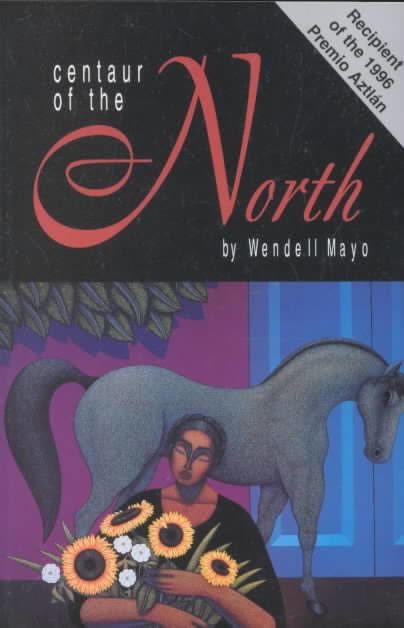6 /10 1 Votes
Originally published 1996 | 3/5 Goodreads | |||||||||||||||||||||||||||||||||
 | ||||||||||||||||||||||||||||||||||
Similar B Horror - and other stories, In Lithuanian wood, Villa and Zapata: A History of, The Cucumber King of K | ||||||||||||||||||||||||||||||||||
Centaur of the north
Centaur of the North, a collection of short stories linked by common words, plot elements, and themes, was written by South Texas author Wendell Mayo (Houston: Arte Público, 1996), with a second printing in 1999. This first short story collection by Corpus Christi author Wendell Mayo won the Premio Aztlán Literary Prize in 1996. The stories' settings move between Corpus Christi in South Texas and various cities in the mid-west, and they focus on families of dual heritage and the ideas of rootedness, tradition, language, and truth.
Contents
- Centaur of the north
- Common Themes
- Connections with Pancho Villa
- Connections with Mythological Figures
- Synopses of Stories
- References
Common Themes
The setting of the collection, which is in South Texas and the Midwest in the latter part of the twentieth century, becomes one of the collection’s subjects. Corpus Christi, which is located on the South Texas coast an hour and a half from Mexico’s borders, evokes a set of questions upon which the work focuses. How can one find an identity among the fabrications, truths, half-truths and myths which have been woven into stories and passed down the generations? How can two linguistic heritages, Spanish and English—lengua and tongue—refer to a single truth (See multilingualism)?
The Midwest is where the mother-character who appears in many of these stories longs to be immersed in a Hispanic culture that she has left behind in Texas. The children that appear in Mayo’s stories hear their parents speak mystifying words in Spanish, or performing healing rituals such as that to banish el mal ojo (the evil eye; see Curandero) that leave them confused. Pictured growing up in traditional Mexican kitchens where lengua (tongue) is cooked and tales are spun, on the beach, or in suburban schoolrooms and living-rooms, the children try to choose between their Mexican and their American roots. Despite the central characters’ attempts to discover and own their real roots, they find themselves mystified or repelled by the foreignness of a world that should be familiar.
Connections with Pancho Villa.
Francisco Villa, called Pancho Villa (1878–1923), was styled "The Centaur of the North" because of his campaigns on horseback in northern Mexico, where he divested the patrón and hacienda system of some of its power. Children raised in families of Mexican heritage on both sides of the border share stories and legends about Villa, comparing him with Robin Hood. Villa, photographed on his horse with crossed bandoliers, is a memorable icon for small boys with heroic urges.
In the short story "Centaur of the North," The first-person narrator's mystification over his older relatives' tales of Pancho Villa are complicated by differences in age and a cultural remove. Villa might as well be a mythological character, for all the protagonist understands about him, yet longs for a more heroic age.
Connections with Mythological Figures.
The teaching role often attributed to the half-man, half-horse figure of the Centaur in mythology does not appear in Mayo’s stories; the role of the warrior Centaurs does appear, mostly in the stories “The Centaur of the North” and “Conquistador.” However, the figure of the Centaur does body forth the idea of beings whose two heritages pull them in different directions, and in the idea of a mythology that still has the power to move us today.
